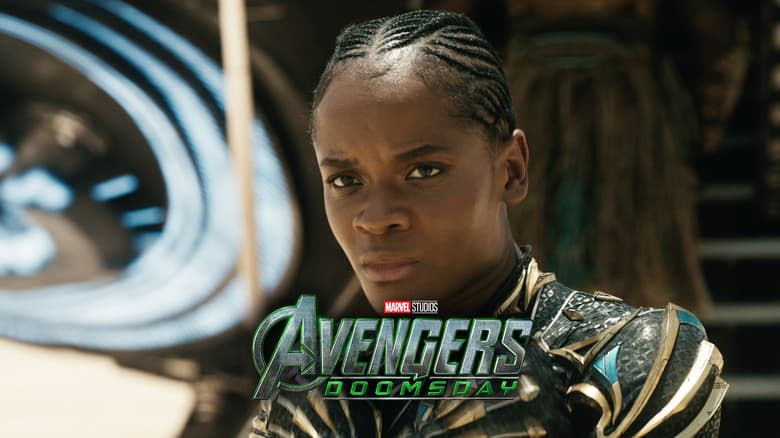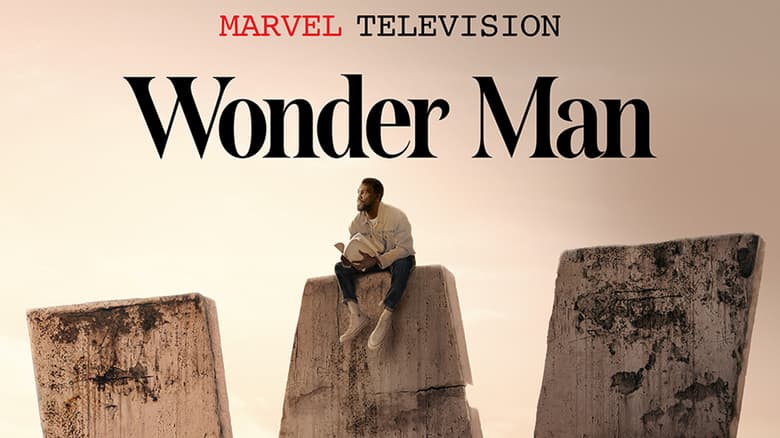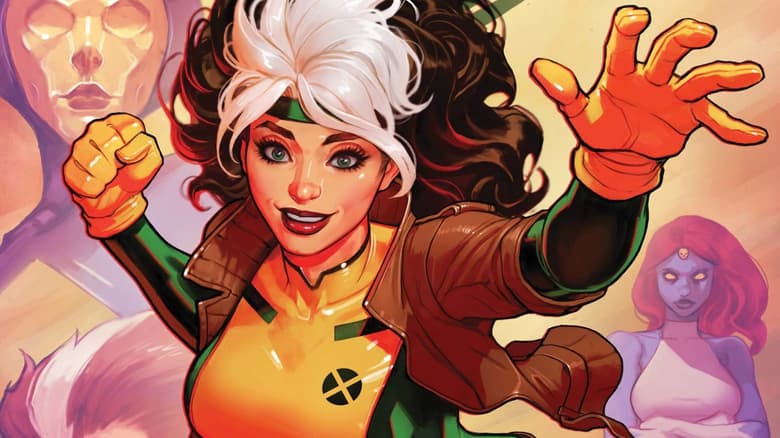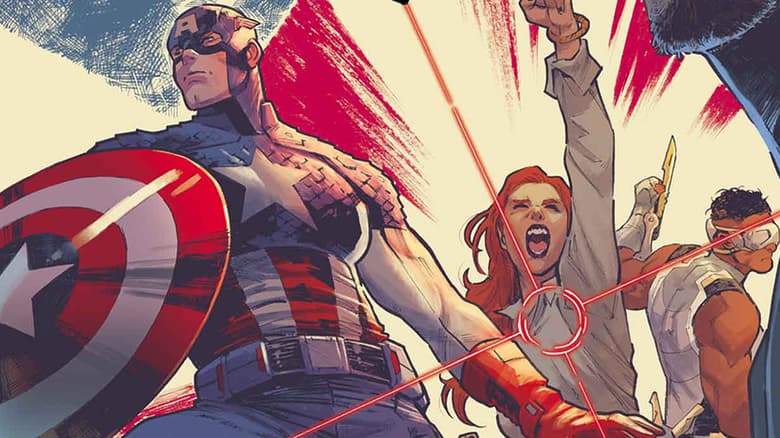Gene Luen Yang Introduces the Captain America Anthology From the Penguin Classics Marvel Collection
Read the foreword to the comic book anthology, available now in paperback and hardcover!
Add to your Penguin Classics collection now—the Marvel Collection is here with some of your favorite Super Heroes from the Marvel Universe!
The Captain America — Penguin Classics Marvel Collection Edition draws upon multiple comic book series, including Captain America’s very first appearances from 1941 alongside key examples of his first solo stories of the 1960s, in which Steve Rogers, the newly resurrected hero of World War II, searches to find his place in a new and unfamiliar world. As the contents reveal, the transformations of this American icon thus mark parallel transformations in the nation itself.
Available in the Iconic Black Spine Paperback, the book also comes as the Deluxe Hardcover edition, featuring gold foil stamping, gold top stain edges, special endpapers with artwork spotlighting series villains, and full-color art throughout.
Featuring the work of Jack Kirby, Joe Simon, Stan Lee, Jim Steranko and John Romita Sr., this anthology collects:
- CAPTAIN AMERICA COMICS (1941) #1
- Captain America stories from TALES OF SUSPENSE (1959) #59, #63-68, #75-81, #92-95, #110-113
- "Captain America...Commie Smasher" from CAPTAIN AMERICA (1941) #78
A foreword by Gene Luen Yang and scholarly introductions and apparatus by Ben Saunders offer further insight into the enduring significance of Captain America and classic Marvel comics.
ORDER NOW: Iconic Black Spine Paperback | Collectible Hardcover
Read Gene Luen Yang's foreword to Captain America below:
Back when I was in high school, new comic books came out every Friday. After the last bell, my friend Jason and I would pick up my little brother and drive to our neighborhood comic bookstore. My brother was in the seventh grade.
What high school junior wants to hang out with a seventh grader? We took him with us to keep him from snitching.
My immigrant parents didn’t approve of me wasting money on frivolities like comic books. I’d earned the money myself by working at our local department store, but that didn’t matter. In the Chinese way of thinking, my money was my parents’ money until I got married.
Every Friday afternoon, Jason and I would pull into the driveway of my house. My brother would come out with Fruit Roll‑Up stuck between his braces and climb into the backseat of my Dodge Aspen. I would tell him to stay quiet. He didn’t always listen.
Jason’s favorite comic book series was The Punisher. Mine was The Incredible Hulk. We both also bought Uncanny X‑Men even though neither of us really understood the storylines. In the late ’80s, nothing was cooler than Uncanny X‑Men.
My little brother was the only one who collected Captain America.
Captain America: the hero with no fancy guns, no gamma-ray rage, no adamantium claws. The hero who wears little wings on the sides of his head, whose only weapon is a glorified Frisbee. The hero who dresses like an American flag. You can’t get much cornier than that.
No doubt about it, Cap was a dork through and through. And that made his fans dorks, too, including my little brother.
I made fun of my brother’s Captain America comics, but I still read them. When you’re a true comic book fan, you read every comic book in the house, no exceptions.
The strangest thing about those stories was that everyone in the Marvel Universe seemed oblivious to Captain America’s dorkiness. Heroes way cooler than Cap—heroes with high-tech armor, heroes who were actual gods—would defer to him. They listened when he spoke. They executed his plans. Did they not notice that this dude walked around with a giant letter A plastered to his forehead?
At some point, I came across the cover of Captain America Comics #1. This was Cap’s debut, first published in 1940. It was written by Joe Simon and drawn by Jack Kirby, both children of immigrants. Like me.
On the cover, Captain America punches Adolf Hitler in the mouth. It’s an arresting image. The United States wouldn’t enter World War II until a year later, in December 1941, so Cap was battling Nazis before almost any of his countrymen.
When I was a college freshman, Marvel published The Adventures of Captain America: Sentinel of Liberty by writer Fabian Nicieza and artist Kevin Maguire. I wasn’t living at home anymore, so I couldn’t rely on my brother to buy it. I had to buy it myself. In the story, we learn that Cap is the son of immigrants from Ireland.
An immigrants’ kid punched Hitler in the mouth while cosplaying the American flag.
That might be even cooler than Uncanny X‑Men.
As I’m writing this, American social media is raging over a controversy about the flag and a shoe. Just before Independence Day 2019, Nike, the nation’s largest shoe company, announced a shoe design featuring America’s first flag, the one with thirteen stars arranged in a circle, popularly known as the Betsy Ross flag. Former San Francisco 49ers quarterback Colin Kaepernick, a Nike-sponsored athlete, expressed to the company’s leadership that he found the Betsy Ross flag offensive because of its connection to slavery. Nike canceled the shoe.
Now folks on social media are arguing about whether or not Nike made the right call. Some are buying Nike shoes to show support. Others are burning them in protest. Some are calling Kaepernick an ingrate. Others are calling him a revolutionary.
I have never been a revolutionary. Even so, the more American history I read, the more I understand Kaepernick’s position. It is impossible to deny the role white supremacy played in our nation’s founding. For some Americans, the symbols of the time—including the flag of the time—are painful reminders of that fact.
But here’s the thing. The Betsy Ross flag is no longer America’s official flag. If American history were a comic book, the Betsy Ross flag would only be the first panel. And as every comic book fan knows, you can’t do much with a single panel. You can’t have a story because your characters can’t change in the space of one panel. They can’t even move.
And that is why the Betsy Ross flag—or at least, the Betsy Ross flag on its own—does not represent the America that I believe in. My America has a story. Its characters change. My America constantly searches out the best path forward and course corrects when necessary. The greatness of my America is not in its memories, but in its vision for the future.
The America that I believe in is a nation on the move.
And perhaps my America is most accurately represented by a flag on the move, a flag that runs across battlefields and cityscapes and even the surface of the moon. A flag that defends the downtrodden, leads coalitions, and relentlessly pushes toward a more perfect justice. A flag that fights for a country where anyone, no matter the origins of their family, can proudly wear red, white, and blue.
A flag that is a hero.
My little brother isn’t so little anymore. He’s now a husband, a father, and a doctor. He still has a longbox of comics tucked away somewhere in his home, and in that longbox is a run of Captain America from the ’80s, every single issue of which I’ve read.
Maybe my brother saw the truth about Cap even as a seventh grader. Maybe he isn’t such a dork after all.
These days, reading the news often leaves me feeling hopeless. Our nation’s rifts seem to grow ever wider and ever deeper.
Reading the stories in this volume, however, reminds me that America doesn’t stay still. Change is woven into the very fabric of who we are. Today’s evils shall pass so long as we’re willing to take up our shields and forge ahead.
Captain America—the hero who is a flag on the move—has set his sights on the future.
He invites us to do the same.
The Black Panther, Captain America, and The Amazing Spider-Man — Penguin Classics Marvel Collection are all available now, everywhere books are sold — ORDER NOW!
Want to stay on top of everything in the Marvel Universe? Follow Marvel on social media—Twitter, Facebook, and Instagram—and keep watching Marvel.com for more news!
The Daily Bugle
Can’t-miss news and updates from across the Marvel Universe!








